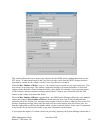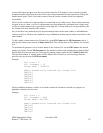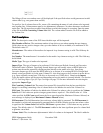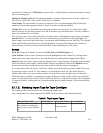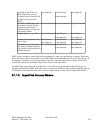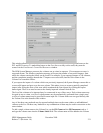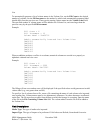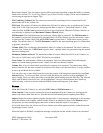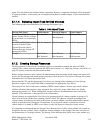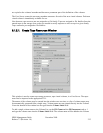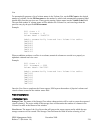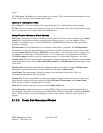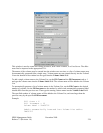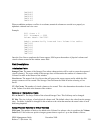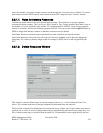
again. You may dismiss the window before completion; however, completion messages will be displayed
in a pop-up window. At this point you can begin entering data for another import, or you can dismiss the
window.
8.1.1.4. Selecting Import Type for Disk Volumes
The following table lists information for selecting disk import types.
Table 4. Disk Import Types
Current Disk Label Default Import Overwrite Import Scratch Import
An ANSI or HPSS label with a
correct Volume ID (the Volume
ID on the label is as expected by
HPSS)
Disk Imported Label Written,
Disk Imported
Disk Imported
An ANSI or HPSS label with an
incorrect Volume ID (the
Volume ID on the label is
different from the Volume ID
expected by HPSS)
Disk Not Imported Disk Not Imported Disk Not Imported
No label Label Written,
Disk Imported
Label Written,
Disk Imported
Label Written,
Disk Imported
8.1.2. Creating Storage Resources
Creating resources is the process of creating Core Server metadata to manage the space on HPSS
volumes. The volumes must be imported into HPSS (see Section 8.1.1: Importing Volumes into HPSS on
page 223) before resources may be created on them.
Before storage resources can be created, the administrator must determine which storage sub-system will
receive the new storage, and which storage class they will be placed in. The choice of storage sub-system
determines the Core Server that will be used.
Ensure that the PVL and the appropriate Core Server are running before initiating a Create Storage
Resources request. Also, ensure that SSM is connected to the appropriate Core Server.
The selected Core Server will create a number of HPSS virtual volumes. All new tape virtual volumes
will have identical characteristics (type, estimated size, stripe size, stripe width, block size, blocks
between tape marks, etc.). When creating disk storage resources, the administrator may override the
default PV Size and enter a value specific to the circumstance.
Virtual volumes are created by the Core Server by grouping physical volumes together in groups of N,
where N is the Stripe Width of the resulting virtual volume. The physical volumes are arranged into
virtual volumes according to the table in the resource creation window, which the administrator should
modify as desired before clicking the Create button. Every physical volume is placed into a virtual
volume before it is usable by HPSS, even if there is only one physical volume per virtual volume.
It is important to understand that the Storage Class characteristics in effect when volumes are created are
assigned to the new volumes. Once volumes are created, changes to the Storage Class have no effect on
the characteristics of existing volumes. The Storage Class characteristics (block sizes, stripe widths, etc.)
HPSS Management Guide November 2009
Release 7.3 (Revision 1.0) 234



